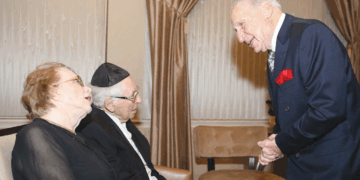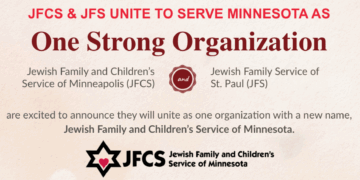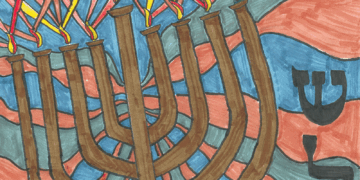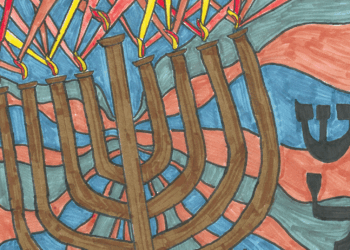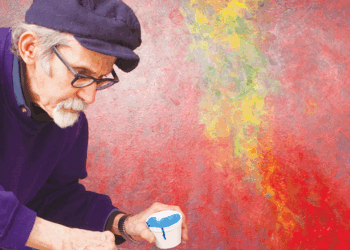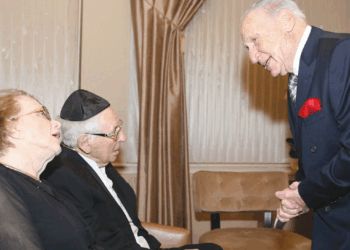Reviewed by NEAL GENDLER
Most of us, born after 1940, know only secondhand of the wide, socially acceptable anti-Semitism in America before World War II.
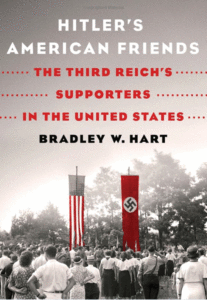
But try to imagine the effect on New York’s two million Jews — among them German refugees — of uniformed members of the German American Bund parading along E. 86th Street in 1939 with a flag bearing the Nazi swastika.
Bradley Hart says his Hitler’s American Friends “argues that the threats posed by the American pro-Nazi movement were far greater than we remember,” and we should keep its lessons in mind as we again see swastikas carried beside American flags.
Nazi propaganda sought to discredit Britain and “to sow enough confusion and discord that the American people would grow weary and simply want to check out of the world events,” he says.
Hitler’s helpers included the Silver Shirts, isolationist or pro-German congressmen, the religious right, students exposed to German propaganda, broadcasts and publications of Father Charles Coughlin and German spies.
Their common thread was anti-Semitism, “the entry point.”
Hart covers each in a chapter, plus one on the largest isolationist organization, America First, fronted by aviation hero Charles Lindbergh.
“Whether they intended to do so or not — or were even aware of it — the leaders of America First had become an important asset to Hitler’s government,” Hart says. “Owned and operated by some of the country’s most powerful corporate interests,” its leaders included Jay Hormel and Sears chairman Robert E. Wood, Hart says.
Businesses, including Ford and GM, feared losing profits from Germany. (Carmakers would profit from the war. After Lend-Lease in 1941, Hormel shipped overseas up to 15 million cans of meat a week.)
Lindbergh drew huge crowds, his increasingly strident speeches culminating Sept. 11, 1941, in Des Moines, when he said three groups conspired to push the nation into war: “the British, the Jewish and the Roosevelt administration.”
That was too much for many Americans, drawing wide condemnation, but it didn’t come from nowhere. Since 1926, millions tuned into broadcasts by Coughlin, a workers’ advocate whose messages grew increasingly sympathetic to Germany and hostile to Jews.
The Bund was brought down by the corruption of its leader, Fritz Kuhn and by exposure in a Chicago Daily Times series led by German-born journalist John C. Metcalfe. The Silver Shirts also disintegrated, its leader imprisoned.
Congress’ German sympathizers and isolationists included Minnesota Sen. Ernest Lundeen, some of whose speeches and articles were written by a German agent, Hart says. Also North Dakota Sen. Gerald Nye, and Montana Sen. Burton Wheeler. New York Rep. Hamilton Fish III ‘s office was the center of a plot using congressional franking privileges to mail German propaganda.
A chart shows Bund membership peaking at 20,000, Silver Shirts at 15,000, each with 100,000 sympathizers. Coughlin’s Social Justice publication reached 200,000 to possibly one million, and his 1938 listenership was estimated at 29 million. America First membership hit 800,000.
A 1939 Fortune magazine poll concluded that 13 million Americans — about one in 10 — agreed that American Jews should be deported.
Heavily researched, Hitler’s American Friends is packed with fascinating and startling information clearly and well written. But it’s not a quick read, regrettably presented on rather longish pages of fairly small type.
Eight pages of photos in the middle don’t include Kuhn, Silver Shirts leader William Dudley Pelley, Coughlin or Lindbergh making his infamous speech.
Hart doesn’t mention Meyer Lansky’s thugs breaking up a New York Bund rally, or disruption of Minneapolis Silver Shirt rallies by a Teamsters local and then the fists of gambling czar Davie Berman and helpers, whose assaults ended the rallies in what then was a very anti-Semitic city.
Isolationism ended Dec. 7, 1941, but Congress declared war Dec. 8 only on Japan. It was Hitler who brought the United States into Europe’s war — his second and biggest mistake. Invading the USSR had written his defeat and declaring war on the United States on Dec. 11 sealed it.
***
Neal Gendler is a Minneapolis writer and editor.

